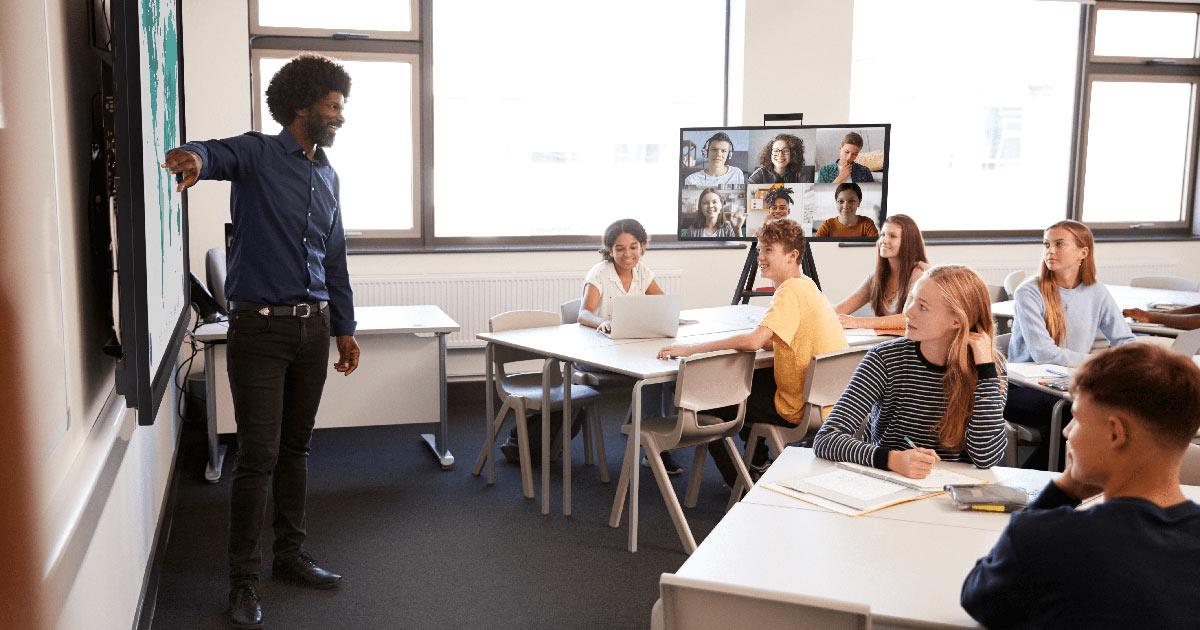Hybrid Classrooms: Innovative Design Strategies for Maximum Flexibility in Learning
the landscape of education is transforming at an unprecedented pace, and hybrid classrooms are leading the way towards a future that is both flexible and inclusive. As modern learners demand greater customization and access, educational institutions are reimagining how learning spaces can foster engagement—whether students are present in-person, attending remotely, or leveraging a blend of both. In this extensive guide,we’ll explore innovative design strategies for hybrid classrooms to achieve maximum flexibility in learning,along with practical benefits,tips,and inspiring case studies.
What Are Hybrid Classrooms?
A hybrid classroom combines face-to-face and online learning,creating a flexible surroundings where students and instructors can interact seamlessly,nonetheless of their physical location. Using advanced technologies and adaptable layouts, these classrooms offer dynamic solutions for today’s diverse educational needs.
- In-person students: Attend classes physically in equipped classrooms.
- Remote students: Join via video conferencing tools and online platforms.
- Hybrid participants: Switch between physical and virtual participation based on needs.
Key Benefits of Hybrid Classroom Design
When implemented effectively, hybrid classroom design can yield numerous advantages for learners, educators, and institutions:
- Enhanced Flexibility: Accommodate diverse learning styles and schedules.
- Scalable Learning: Reach wider audiences without sacrificing quality or engagement.
- Personalized Experiences: Adapt learning paths, resources, and assessments for each student.
- Optimized Space Utilization: Make the best use of physical and digital environments.
- Improved Accessibility: Remove geographical,physical,and scheduling barriers.
- Future-proof Education: Integrate evolving technologies to keep pace with changing demands.
Innovative Hybrid Classroom Design Strategies
Designing a truly flexible hybrid classroom goes beyond merely adding cameras and screens. Here are proven strategies to maximize learning outcomes:
1. Flexible physical Space Layouts
- Modular Furniture: Use mobile desks, rolling chairs, and folding divider walls to quickly adjust room layouts for group work, lectures, or hybrid discussions.
- Clear Lines of Sight: Ensures all students can see instructors, screens, and each other, fostering participation both online and offline.
- Multiple Engagement Zones: Designate areas for solo study, small groups, and whole-class collaboration, with technology to connect remote participants to each zone.
2. Integrated Technology Solutions
- High-Quality AV Equipment: Invest in 4K cameras, omnidirectional microphones, and interactive, touch-enabled displays.
- Unified Dialogue Platforms: Adopt tools like Zoom, Microsoft Teams, or Google Meet with learning management system (LMS) integration for content distribution and attendance tracking.
- Smart Boards & Digital Whiteboards: Enable real-time annotation visible to both in-person and online learners.
3. Synchronous & Asynchronous Learning Design
- Recorded Lectures: Offer on-demand access to live sessions for student flexibility.
- Interactive Polls & Quizzes: Tools like Kahoot! or Poll Everywhere make lessons engaging for all participants.
- Online Forums: Encourage ongoing discussions, Q&A, and collaborative projects outside scheduled class time.
4. Emphasis on Inclusivity & Accessibility
- Closed Captioning & Transcripts: Supports students with hearing impairments and those for whom English is a second language.
- Adaptive Technologies: Use screen readers, text-to-speech, and adjustable font sizes for a truly inclusive experience.
- Equitable Participation: Design activities where remote and in-person students collaborate as equals.
Practical Tips for Implementing Hybrid Classroom Flexibility
- Test Technology Beforehand: Minimize downtime and distractions by running regular equipment checks.
- Train Faculty and Students: Offer ongoing workshops and help resources for using classroom tech effectively.
- Establish Clear Protocols: Include guidelines for participation, communication, and troubleshooting to ensure consistency.
- Gather Feedback Frequently: Use surveys and open forums to learn what’s working and where improvements are needed.
- Focus on Human Connection: Prioritize interaction and engagement to foster a sense of classroom community, regardless of physical location.
real-World Case Studies
1. University of central Florida (UCF) – BlendFlex model
UCF’s BlendFlex initiative allows students to choose how they attend each session—face-to-face, synchronous online, or asynchronous.Flexible seating, robust AV setups, and seamless LMS integration ensure that all students, regardless of presence, access the same high-quality content and interactions. Student satisfaction scores and academic performance have risen since adopting the model.
2. International School of Brussels – hybrid Learning Spaces
Innovatively combining flexible furniture, sound-absorbing materials, and collaborative digital boards, ISB supports project-based, hybrid learning for K-12 students. Their design empowers students to move between individual study and group collaboration fluidly, both in-person and remotely.
First-Hand Experience: Voices from Hybrid Educators
“The hybrid classroom has redefined how I approach teaching. With interactive polls and breakout rooms, even shy remote students are participating more than ever. Our flexible classroom furniture lets us reconfigure the space each week to match our lesson goals—and students love the variety!”
– Sarah T., High School Science Teacher
“We initially struggled with tech hiccups, but after creating digital guides and running practice sessions, everyone adapted quickly. now, our hybrid classes are more accessible, and attendance is up.”
– Dr. Mark L., University Lecturer
Conclusion: Embracing the Hybrid Future
Hybrid classrooms are transforming education by marrying technology with smart design, offering flexible, engaging, and inclusive learning environments that can weather any change. By leveraging innovative design strategies—like modular layouts, advanced AV equipment, and synchronous/asynchronous learning tactics—educators can unlock maximum flexibility for all learners. As the classroom of tomorrow arrives,staying agile and human-centered will ensure every student,everywhere,can thrive.
Are you ready to revolutionize your learning environment? Embrace these hybrid classroom design strategies today and watch engagement, accessibility, and success soar!

